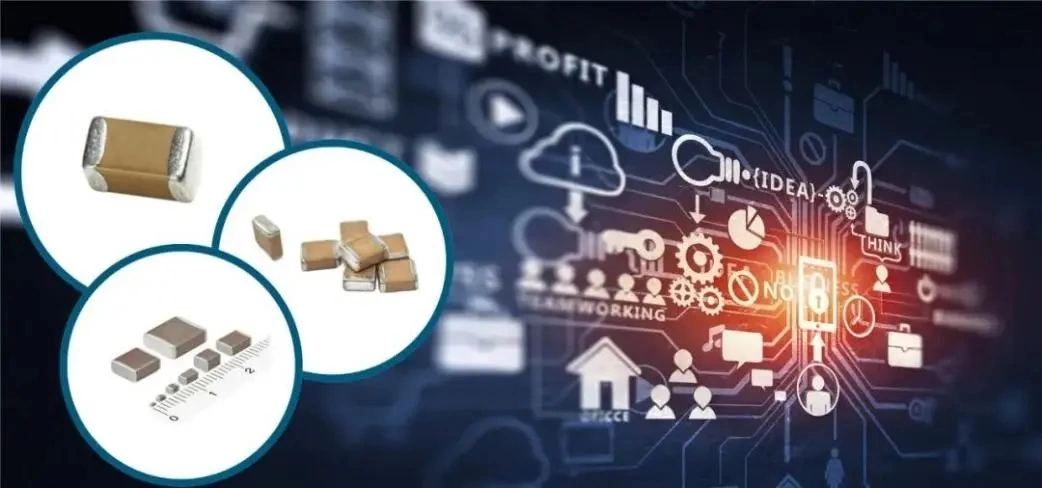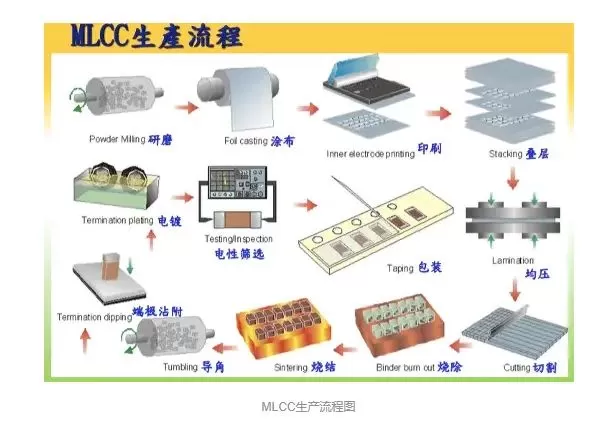In the rapidly evolving global electronic information technology landscape, Multi-layer Ceramic Capacitors (MLCCs) have emerged as a focal point in the market, especially in the realm of high-end integration products. MLCCs play an indispensable role in electronic devices, particularly in the ever-growing high-end market. As the world's largest consumer of MLCCs, China is currently witnessing a revolution in the release of high-end MLCC production capacities as part of its domestic substitution strategy.

The global MLCC market has shown steady growth over recent years, demonstrating a robust demand that continued to rise even amidst the production disruptions caused by the COVID-19 pandemic in 2020. From 2019 to 2022, the global MLCC market size expanded from 915 billion yuan to 1,204 billion yuan, with expectations of continued growth in the coming years. The Chinese market, in particular, has shown significant progress in this domain, with its share reaching about 40% of the global market size in 2021, indicating a strong upward trend.
Despite being the largest consumer of MLCCs globally, China's dependency on imported materials and equipment remains significant. Data from the Chinese Customs Administration reveals that from 2018 to 2022, the trade deficit in China's MLCC market gradually decreased, reflecting the gradual growth of the domestic industry. However, the high dependency on imported high-end MLCCs underscores the vast market potential and substitution possibilities within the country.
As a leading domestic electronic ceramics enterprise, Three Circles Group has made significant breakthroughs in MLCC product development, covering a wide range of products from conventional to high-strength and high-voltage series. Continuous technological innovation and capacity expansion have paved the way for the mass production of high-end MLCC products, laying the groundwork for domestic substitution.
Dedicated to producing high-end new electronic components, Fenghua Advanced Technology has achieved comprehensive coverage across all MLCC sizes and made notable advancements in high-end product areas. Through technological innovation, Fenghua is gradually narrowing the gap with international brands, becoming a crucial player in the domestic substitution process.

The production of high-end MLCCs faces significant technical barriers, requiring breakthroughs in material purity, particle size control, and layering technology. Additionally, the localization of production equipment is key to advancing domestic substitution. While there has been progress in domestic production equipment, key devices such as casting machines and layering machines still require development.
With the development of global electronic information technology, especially the widespread adoption of emerging technologies like 5G and IoT, the demand for high-performance MLCCs will continue to grow. China's position in the global MLCC market is increasingly important, especially against the backdrop of domestic substitution. Reducing dependence on foreign high-end MLCCs and promoting the domestic MLCC industry's transition to high-end fields is urgent.
Achieving domestic substitution for high-end MLCCs requires:
Increased R&D investment: Domestic enterprises should boost their investment in R&D for high-end MLCC products, introduce advanced international technologies, accelerate innovation, and shorten the gap with global leaders.
Enhanced material self-sufficiency: Addressing the production of high-purity powder materials domestically to reduce reliance on imports and exploring alternative materials to lower costs and improve product performance.
Improved production processes: Optimizing key MLCC production processes, such as printing and layering techniques, to enhance efficiency and product quality.
Equipment localization: Advancing the localization of key production equipment to reduce costs and enhance the competitiveness of the entire supply chain.
The localization of high-end MLCCs requires not just individual corporate efforts but also the development of a healthy industrial ecosystem with close cooperation between industry, academia, and research institutions. Policy support, financial investment, and talent cultivation can promote the collaborative development of the upstream and downstream supply chain, accelerating the market application and industrialization process of high-end MLCC products.
As demand for high-end MLCCs continues to increase both domestically and internationally, domestic substitution has become a significant direction for China's electronic component industry. Through strengthening technological R&D, enhancing the industry's self-sufficiency, optimizing production processes, and promoting equipment localization, China's MLCC industry is poised for breakthroughs in the high-end market, narrowing the gap with international standards. In the future, as domestic high-end MLCC technologies mature and their applications become more widespread, China will occupy an even more significant position in the global capacitor market, contributing greatly to the development of the electronic information technology industry. The successful localization of high-end MLCCs will not only enhance China's competitiveness in the global electronics market but also play a critical role in ensuring the security and self-reliance of its electronics supply chain.
The push towards domestic substitution in the high-end MLCC sector reflects a broader strategy to bolster China's position in the high-tech electronics sector. This move is not merely about reducing import dependency; it's about fostering innovation, enhancing the technological prowess of Chinese companies, and securing a more significant share of the global value chain in electronics manufacturing. By achieving breakthroughs in high-end MLCC production, China can move up the value chain, from being a major market for electronic components to becoming a leading producer and innovator.
The journey towards domestic substitution and technological leadership in the high-end MLCC market presents both opportunities and challenges. On one hand, the growing demand for advanced electronic components, driven by trends such as digitization, electrification of vehicles, and the proliferation of smart devices, offers a vast market for high-end MLCCs. On the other hand, overcoming the technical barriers and achieving scale in production to compete with established international players requires substantial investment, time, and research.
Market Growth: The exponential growth in technologies like 5G, AI, and IoT expands the market for high-end MLCCs, providing ample opportunities for domestic producers.
Government Support: Policy incentives and support from the Chinese government can accelerate R&D and innovation, helping domestic companies to overcome initial hurdles.
Technical Complexity: The production of high-end MLCCs involves complex processes and high technical barriers, demanding continuous innovation and improvement.
International Competition: Competing with established global giants in the MLCC market requires not just matching but exceeding their quality and reliability standards, a daunting task for any new entrant.
The future of China's high-end MLCC industry is not just about achieving self-sufficiency but about aiming for global leadership. This ambition requires a multi-faceted approach, combining technological innovation, strategic industry collaboration, and a focus on quality and sustainability. By leveraging its vast market, skilled workforce, and supportive policies, China is well-positioned to make significant strides in the global electronics scene.
In conclusion, the journey towards domestic substitution and excellence in the high-end MLCC market is a challenging yet vital endeavor for China's electronics industry. Success in this area has the potential to transform China from a global consumer to a world-leading producer of electronic components, reshaping the global electronics supply chain. As the world moves towards increasingly sophisticated electronic technologies, the importance of advanced components like high-end MLCCs will only grow, making the stakes of this endeavor even higher and the rewards even more significant.
Zirconia beads grinding is a critical technique in MLCC production, utilizing zirconium dioxide beads for fine grinding of ceramic materials. This method enhances material purity and uniformity, crucial for the consistent dielectric properties of MLCCs. It offers increased production efficiency due to the beads' durability, leading to fewer operational interruptions. Additionally, the process contributes to the miniaturization of MLCCs while maintaining or enhancing their capacitance, crucial for the demand in consumer electronics, automotive, and industrial applications. This environmentally friendly approach aligns with sustainable manufacturing practices, supporting the industry's push towards smaller, more powerful electronic components.

Submit your demand,
we will contact you ASAP.

Sanxin New Materials Co., Ltd. focus on producing and selling ceramic beads and parts such as grinding media, blasting beads, bearing ball, structure part, ceramic wear-resistant liners, Nanoparticles Nano Powder

